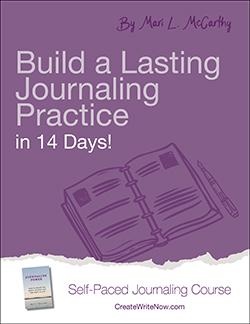 Starting to write in your journal again after an extended hiatus can feel like waking up from a long nap—you know you should do it, but it’s just so hard to motivate yourself to get started. Stop hitting the snooze button and use these five tips to break the inertia and get back in the habit of regular journaling for health and happiness.
Starting to write in your journal again after an extended hiatus can feel like waking up from a long nap—you know you should do it, but it’s just so hard to motivate yourself to get started. Stop hitting the snooze button and use these five tips to break the inertia and get back in the habit of regular journaling for health and happiness.
1. Start with the present.
If you haven’t written in a long time, you may feel obligated to “catch up” on everything that has happened in the last few weeks or months (or even years!). This can be a daunting task and may prevent you from putting pen to paper at all. Make it easy on yourself and start fresh, right from the present moment. Don’t worry about the past and instead focus on your current events, feelings, thoughts and goals. If you still feel the need to write a summary of the time you missed, limit yourself to a page or two and write a quick numbered or bulleted list of the highlights.
2. Get inspired by journal-writing prompts.
If you think you have nothing to write about, think again. Browse the Create Write Now list of journaling prompts to defeat even the toughest writer’s block.
3. Take baby steps.
Don’t pressure yourself to write 10 pages your first day back. A little goes a long way to stretch your writing muscles and get back into shape. Start with a short writing prompt or simply a quick summary of your day to get the creative juices flowing again. If you only manage a paragraph or two, that’s OK. Congratulate yourself for journaling at all. The next time, challenge yourself to write a little bit more.
4. Focus on the joy of writing.
Appreciate the act of writing, from the feel of your pen and the sound it makes on paper to the emotional release you experience when you find just the right words. Savor the time you have to write in your journal and remember why it is important in your life. Write down what you love about journaling, and refer back to this when you are struggling to write in the future.
5. Set yourself up for next time.
At the end of your current journal entry, set the scene for the next time you sit down to write. Trail off in the middle of an intriguing sentence that you can easily pick up again at a later date. Ask yourself compelling questions to answer in the future. Come up with your own writing prompt to respond to when you have writer’s block.
How do you jump-start your journaling after a long break? Add your tips in the comments below.
If you want to learn how journaling can help you tackle life's challenges, please download the free eBook, The Journaling Guide to Manage The Stress and Strains of Life.
Are you new to journaling? Or are you an experienced journaler who wishes to restart a daily journaling practice? Our Build a Lasting Journaling Practice in 14 Days self-paced course can show you how.



Leave Comment